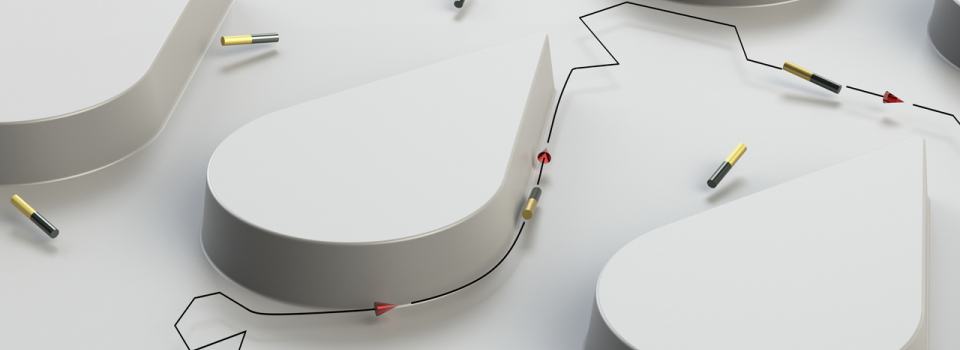Feb 28 2018
Published by
NYU Shanghai

A team of scientists has created a system of tiny motors less than the width of a human hair that can be maneuvered through well-designed traffic signs placed in the environment where the motors move about. The work, which appeared in the journal Soft Matter, aims to find ways to effectively deliver pharmaceuticals carried by these tiny motors to desired spots during medical treatments.
In the above, the black and gold cylinders—composed of platinum and gold—become energized and move as nano-motors once submerged in a solution. Left unchecked, these motors travel in a random fashion. To control their movement, the research team created teardrop-shaped structures (white islands) that serve as hydrodynamic traffic cops.
“The nano-motors are attracted to the posts’ perimeters due to a hydrodynamic force, but become easily detached from the sharp tip of the teardrops,” explains Professor Jun Zhang, who holds appointments at the Courant Institute of Mathematical Sciences, the Department of Physics, and NYU Shanghai. “As a result, the nano-motors can be directed or guided to desired directions and locations.”
The research team also included Megan Davies Wykes, a former post-doctoral fellow at the Courant Institute of Mathematical Sciences, as well as Courant Professors Leif Ristroph and Michael Shelley and Chemistry Professor Michael Ward.
The article is written by James Devitt.


